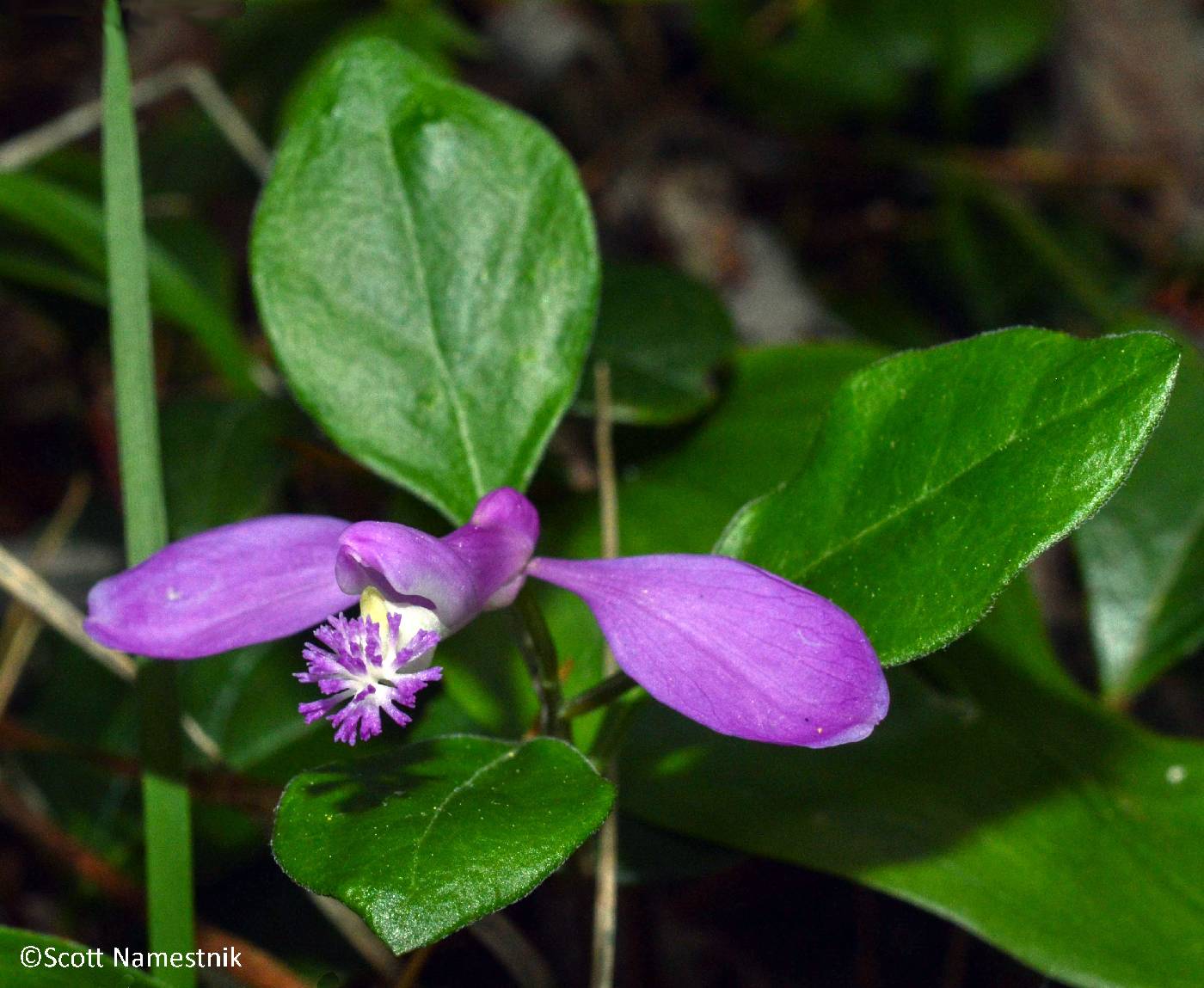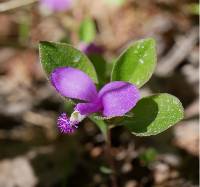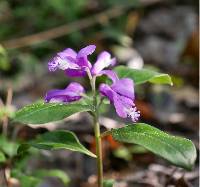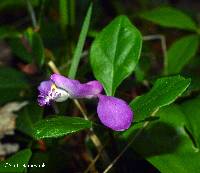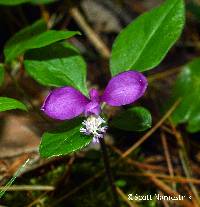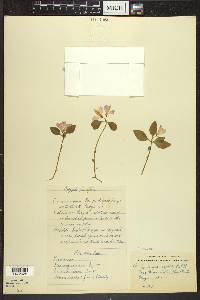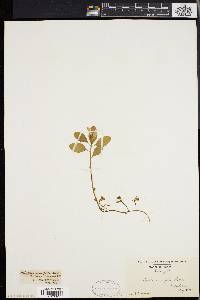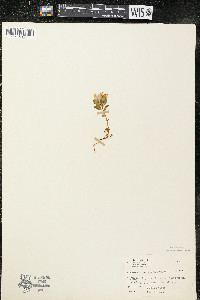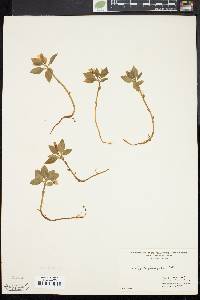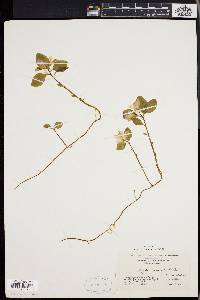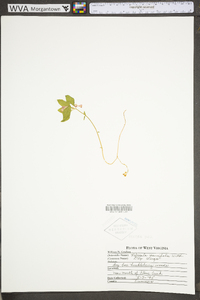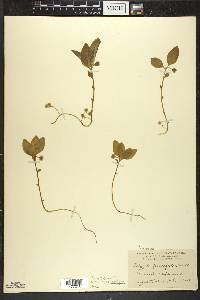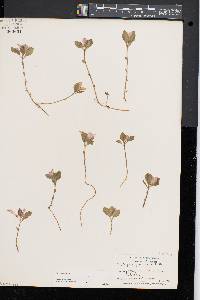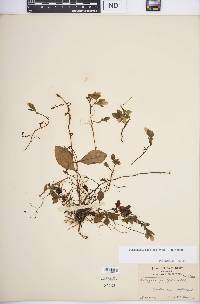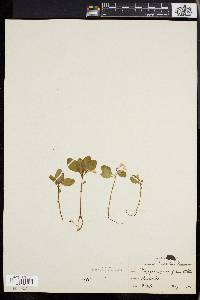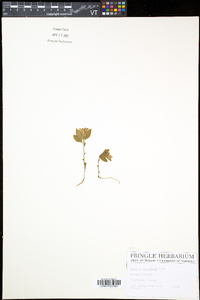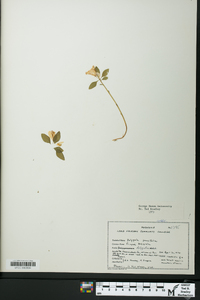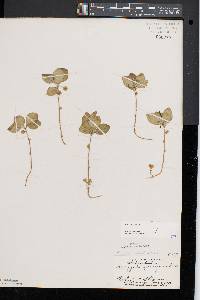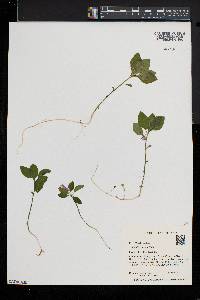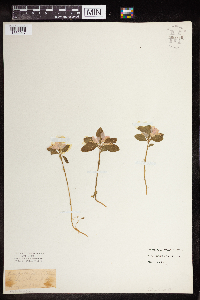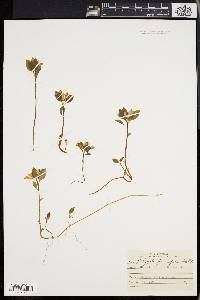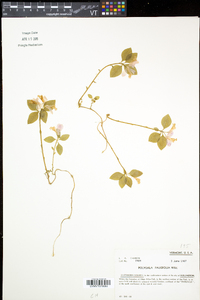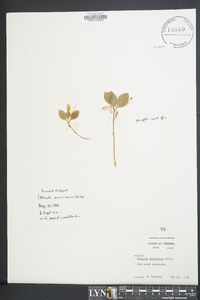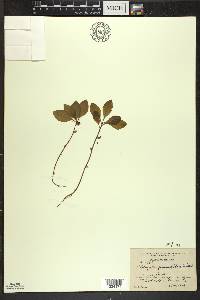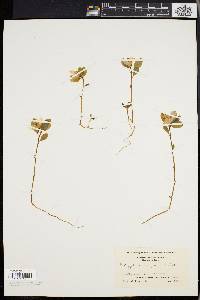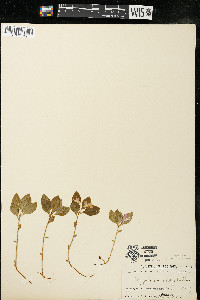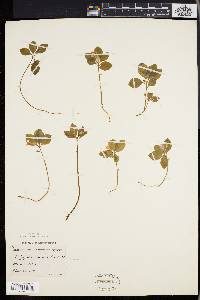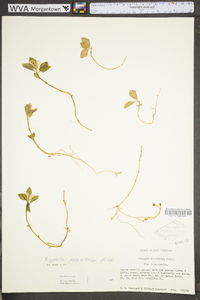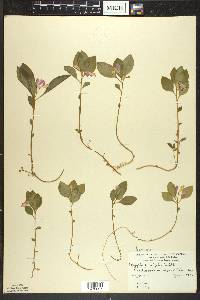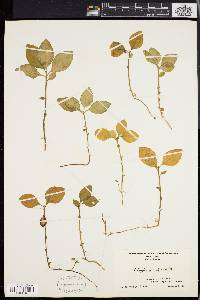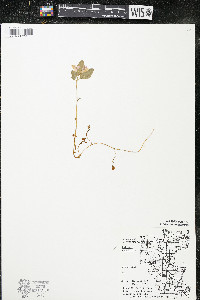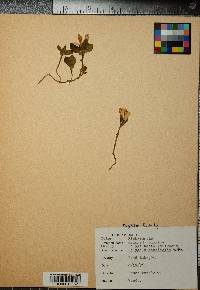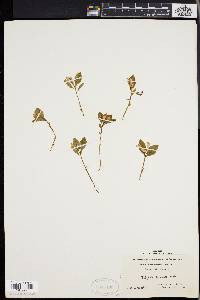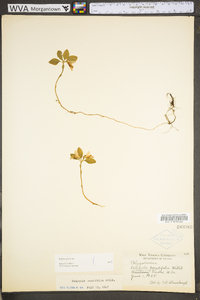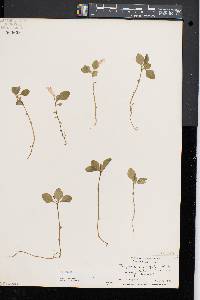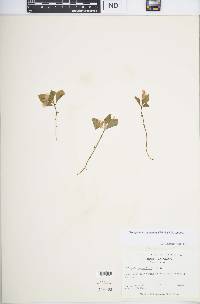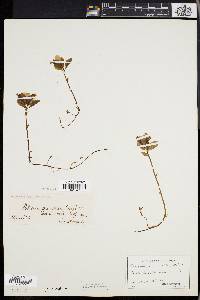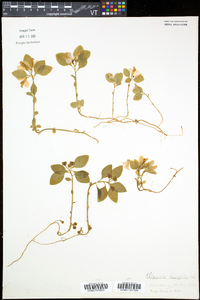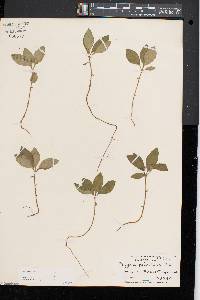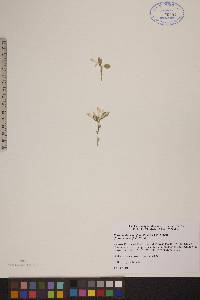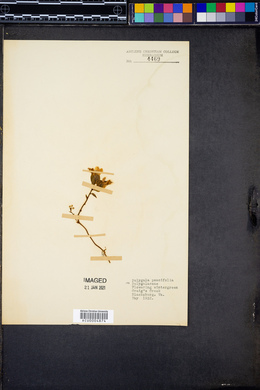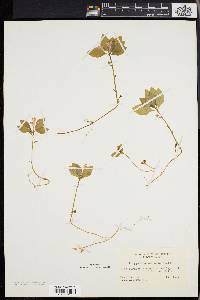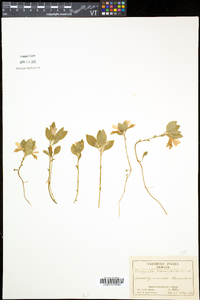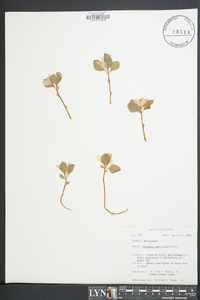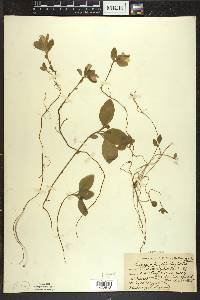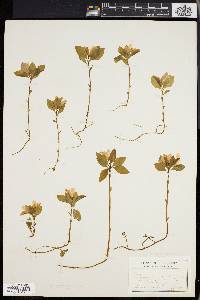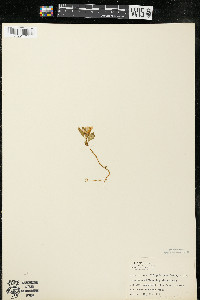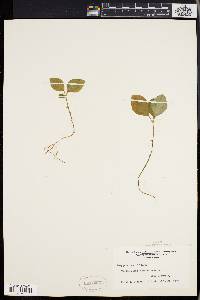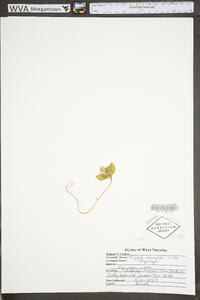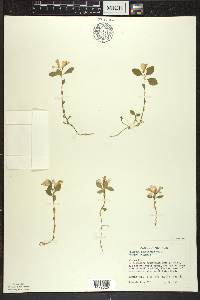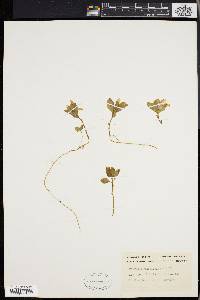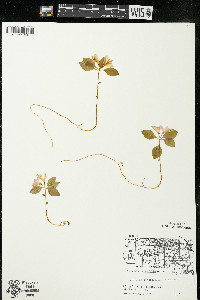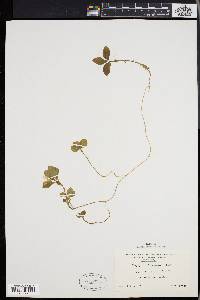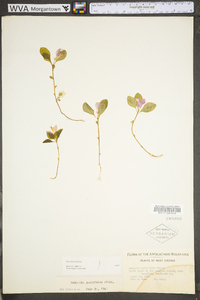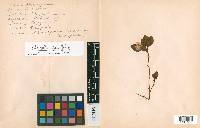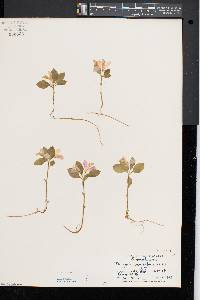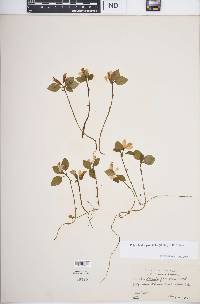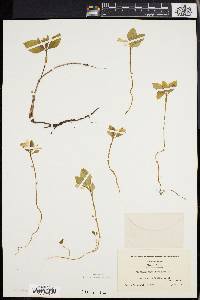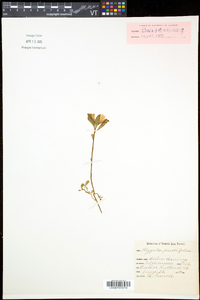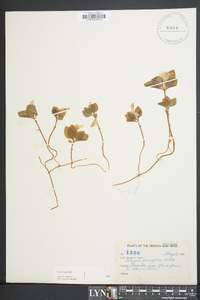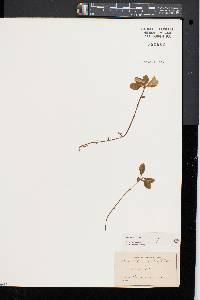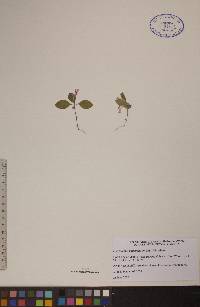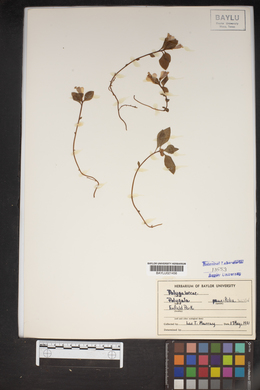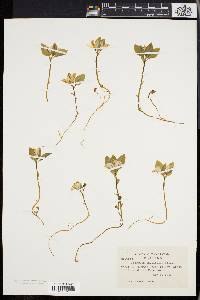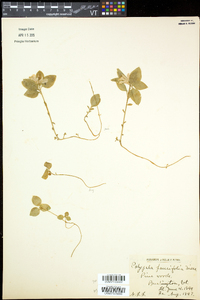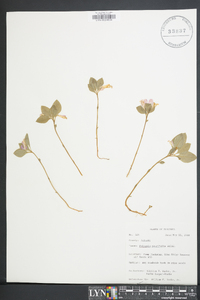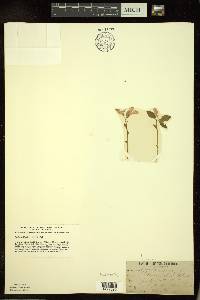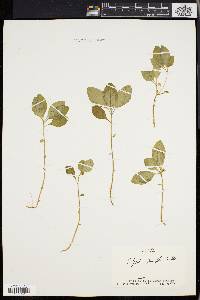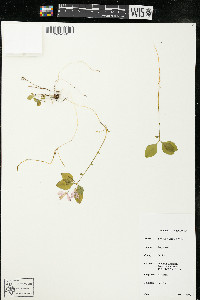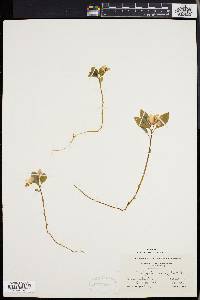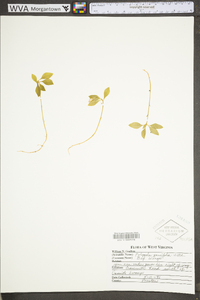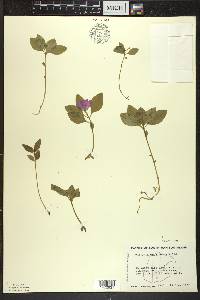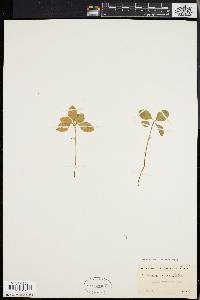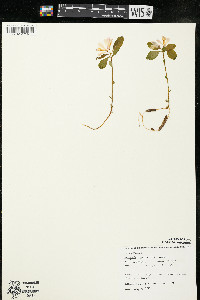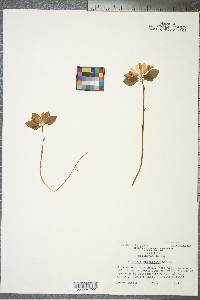Polygaloides paucifolia
|
|
|
|
Family: Polygalaceae
Gaywings
[Polygala paucifolia Willd., morePolygala paucifolia f. alba (Eights ex L. C. Beck) House, Polygala paucifolia f. albiflora Farw.] |
Perennial herb 8 - 15 cm tall Stem: creeping and spreading by rhizomes, with ascending flowering stems. Leaves: alternate, with several scale-like (2 - 8 mm long) lower leaves scattered along the stem and three to six stalked, elliptic to oval leaves (1.5 - 4 cm long) crowded near the stem tip. Flowers: borne one to four at end of stem, rose-purple to pink or white, with three small outer sepals and two inner petal-like sepals (wings) about the same length as the petals. The three petals are fused into a tube 1.3 - 2.3 cm long, and one petal is fringed. There are also a few self-pollinating flowers near the base that remain closed (cleistogamous). Fruit: a dehiscent capsule, 6 mm long, nearly circular in outline, notched at the tip, with a three-lobed appendage (aril) attached to the seed. Similar species: The other Polygala species with alternate leaves, Polygala incarnata, Polygala polygama, Polygala sanguinea, and Polygala senega, are taller with erect stems, and have flowers that are less than 11 mm long. Flowering: mid to late May Habitat and ecology: A very rare species found in the high dunes that has nearly been extirpated in the Chicago Region. Occurence in the Chicago region: native Etymology: Polygala comes from the Greek words polys, meaning much, and gala meaning milk, referring to the old belief that milkworts would aid in milk secretion. Paucifolia means sparse-leaved. Author: The Morton Arboretum Colonial perennial with slender rhizomes emergent from small tubers; stems 8-15 cm, with several scattered scale-lvs 2-8 mm, and near the summit 3-6 elliptic to oval lvs 1.5-4 cm; a few cleistogamous fls usually present at the base; chasmogamous fls 1-4, each on a long pedicel from the very short terminal peduncle, rose-purple to white, 13-19 mm, the cor about equaling the obovate wings; stamens 6; stigma obscurely bilobed; fr suborbicular, 6 mm, notched at the tip; seed with a 3-lobed aril. Moist rich woods; Que. and N.B. to Sask., s. to Conn., N.Y., Wis., and in the mts. to Ga. May, June. (Triclisperma p.) Gleason, Henry A. & Cronquist, Arthur J. 1991. Manual of vascular plants of northeastern United States and adjacent Canada. lxxv + 910 pp. ©The New York Botanical Garden. All rights reserved. Used by permission. From Flora of Indiana (1940) by Charles C. Deam The only specimens I have seen grew on the north slope of a black oak dune near Lake Michigan in Porter County. This colony was discovered by Marcus W. Lyon, Jr., who was the first to report it for Indiana. Pepoon later reported it for Lake and Porter Counties for Hill and Umbach but I have not seen these specimens. W. F. Durno, 180 N. Wacker Drive, Chicago, Ill., wrote me that on May 1, 1938, he saw the colony and estimated that there were 100 plants in bloom on that date. From his description of the location of the colony, I think it is the same colony that Dr. Lyon found in 1927. Durno also writes that there is a small colony of the whiteflowered form a short distance to the southwest of this colony. In 1929 I collected a single plant for a record and at that time there were not more than 20 plants in the colony. …… Indiana Coefficient of Conservatism: C = 10 Wetland Indicator Status: FACU |

